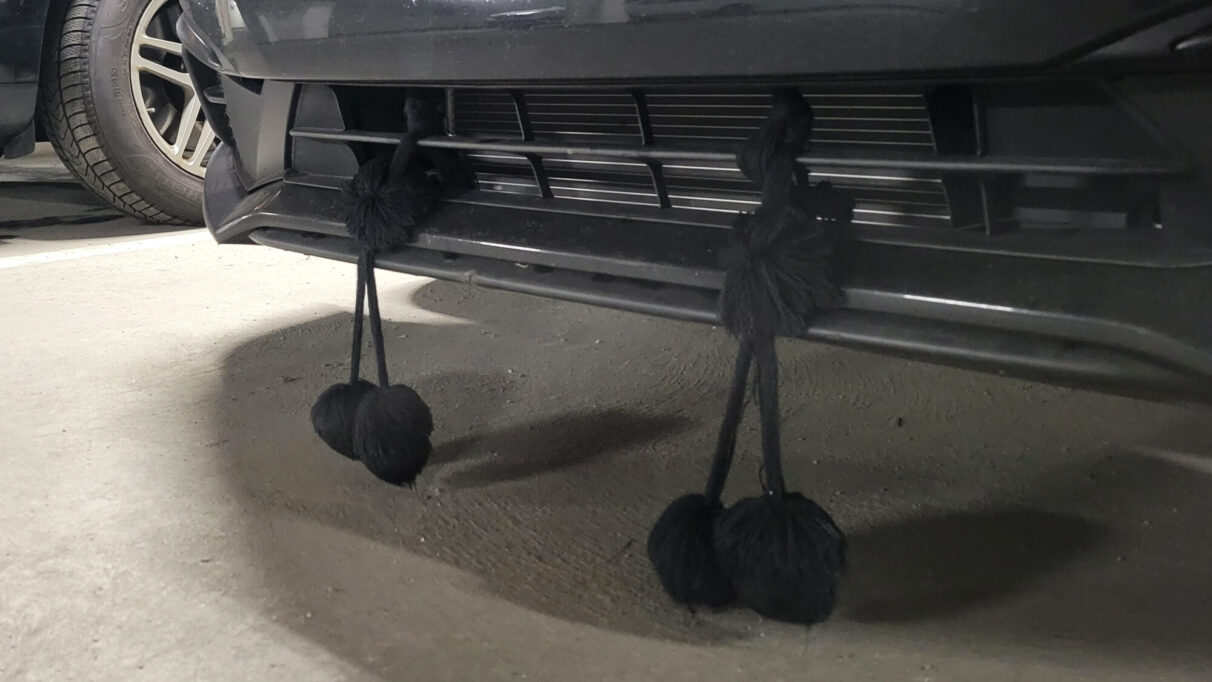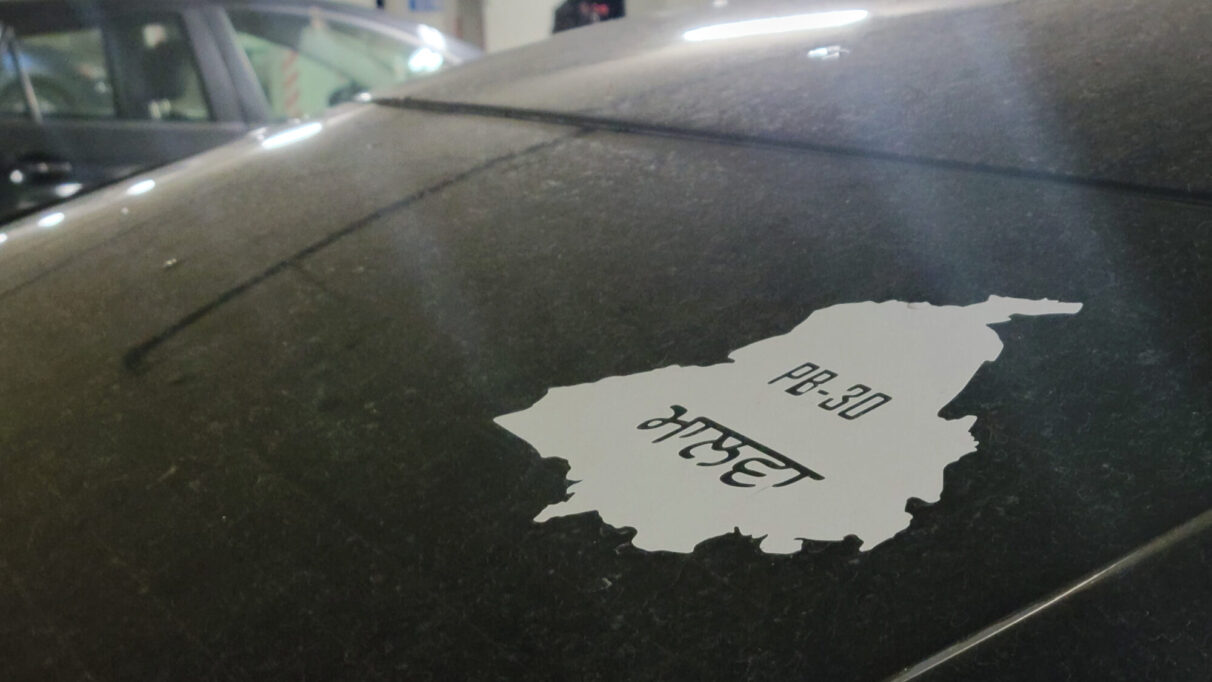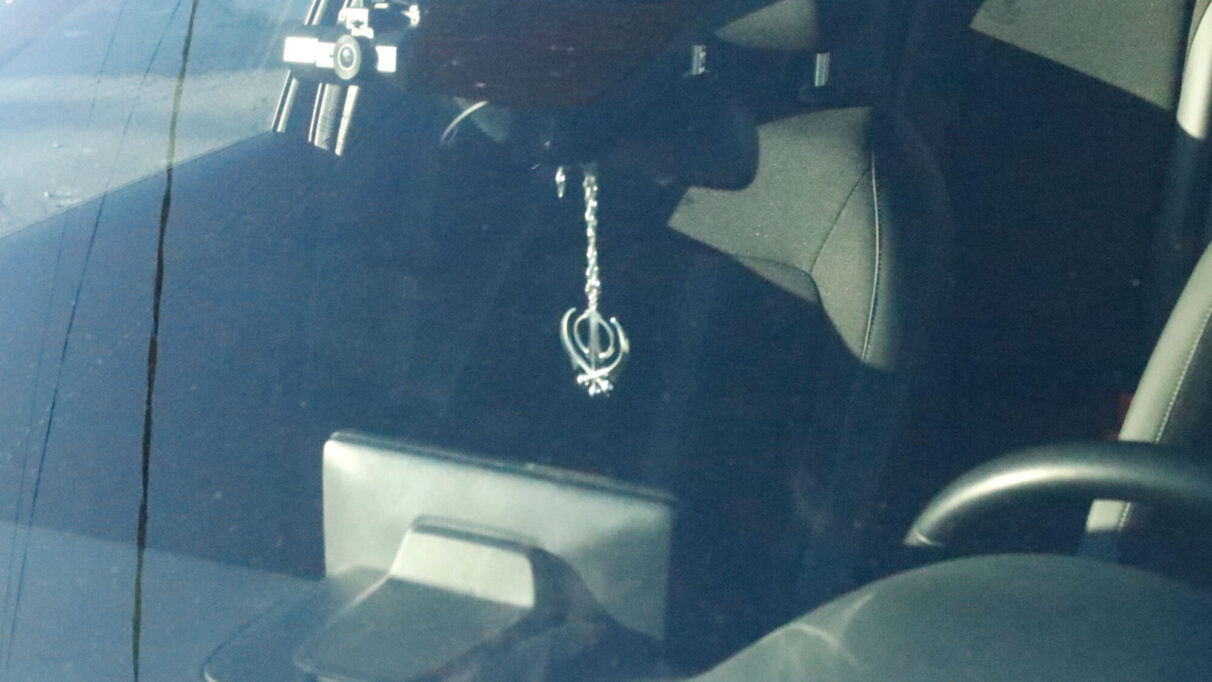Indian car culture blends style, status and culture
A surge in immigration has seen distinctive decorations on the streets of Halifax

caption
Cars sporting decorations including black tassels, as seen here, decals and vanity plates are part of the culture of the Indian diaspora in Canada.Maybe you’ve noticed them driving around the city: cars decked out with black tassels hanging from the bumper, stickers of machine guns and phrases in Punjabi on the back windows, and, more often than not, a customized licence plate.
These cars, usually newer-model sedans, are an expression of the Indian diaspora in Nova Scotia, whose population has risen sharply in recent years. According to Statistics Canada, in 2021, 17 per cent of recent immigrants to the province were from India, an increase from 7.6 per cent in 2016.
And these newcomers are showing off their culture with their cars.
Inder Sohi is one such driver. He owns a white Honda Civic with tassels hanging from the front fender, a golden Sikh symbol hanging from the rear-view window and a vanity plate referencing his home state of Punjab.
Why does he do it? Because “it’s a kind of style, kind of a different thing to put on the car,” he said.
But there’s more to it. Arjun Gurm is originally from Punjab and has been living in Canada for six years. He says there’s a lot of historical and cultural meaning behind many of the things people decorate their cars with.
It’s for “status and everything,” he said, but also to express “cultural aspects.”
Paranda
Black strings of pom poms, called paranda, are a distinctive part of Canadian-Indian car culture. They’re usually hung from the front bumper.

caption
Paranda are meant to bring good luck and to protect the driver from negative energies. They’re also used as hair decorations.“This goes way back, like decades,” Gurm said, saying it started with truck drivers in Punjab who hung the tassels from their mirrors.
Sohi said the paranda are good luck and “protect the car from negative energies.”
Colourful paranda are also used by Indian women as hair decorations. The strings are woven into long hair “to make it more thicker,” said Gurm.
“We love our cars like we love our women. That’s another way of saying that,” he said, laughing.
Stickers
Decals, large or small, and usually on the back windows, rear windshield or the side doors, are another characteristic decoration.
Gurm says the stickers have many different meanings, depending on the sticker itself.
“If you have like, a sticker with the guy with the arrow or the AK-47,” it has cultural aspects, he said, but that they can also be “just to look cool.”
The “guy with the arrow” is Sant Jarnail Singh Bhindranwale, often depicted holding a spear. Bhindranwale was a Sikh leader and militant who was killed by the Indian government.

caption
Sain Jarnail Singh Bhindranwale was a Sikh leader and militant. Stickers of him are “to show the government we won’t forget” the anti-Sikh violence of 1984, says Arjun Gurm.The AK-47 rifle decal is another popular motif. Gurm says it’s important to the Sikh community as a symbol of resistance and was used during violent clashes with the government in 1984.
“We say if that wasn’t our weapon at that time, we would have failed miserably. That’s one of the survivor weapons we have.”
Other stickers are less political, such as ones depicting Sidhu Moose Wala, a popular Punjabi rapper, or outlines of the home state of the driver.

caption
A sticker of the outline of the state of Punjab indicates where the driver is from. PB-30 indicates the city of Muktsar, while the Gurmukhi script reads Malwa, a sub-region of India.Mirror ornaments
Decorations hanging from the rear-view mirror of cars are another feature and usually come in two variations, said Gurm.
The Khanda is the symbol of the Sikh religion, depicting a double-edged sword set against a circle, flanked by two curved blades.

caption
The Khanda is the symbol of the Sikh religion. It is a common rear-view mirror accessory.The Ik Onkar, another Sikh symbol, is a character from the Gurmukhi script that means “one god,” a central tenet of Sikhism.
Vanity plates
Many cars also have customized licence plates. Gurm said that this is usually a purely stylistic choice. “People like the word, they pick that up and they go for it.”
However, he said the word chosen can also be used to express the identity of the driver, such as the initials PB, signifying Punjab, or their caste status.
A car community
So, who’s driving these cars?
Gurm said it’s mostly “young guys, the new generation like between 18 to 25.”
He said it’s also more common among people from the Sikh community or from Northern India, specifically the states of Punjab and Haryana.
“We are more into the showoff thing,” he said.
Gurm added that there’s some pressure to buy a car after immigrating to Canada, as people back home in India see the purchase of a new car as a mark of success.
“They have a checklist: he has his own house and his car, he’s successful. That’s the basic standard.”
But the choice to decorate the car lies with the driver. And despite the cultural meanings behind the decorations, style is a key factor as well.
“Hell yeah! Like, I want to do it, why not put this s— on [my car]?” said Gurm, describing the motivation to accessorize your ride.
Inder Sohi agreed with that sentiment. When asked why he had added so much to his car he said “the car looks good. You know that.”
About the author

Linus Mulherin
Linus Mulherin is a journalism student at the University of King's College. Born in the N.W.T., he was raised in the Annapolis Valley.
